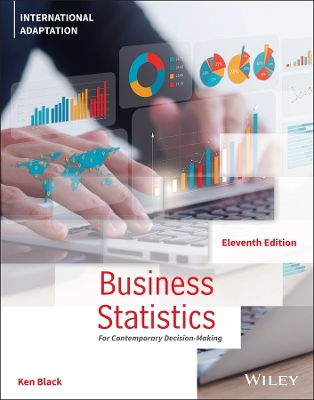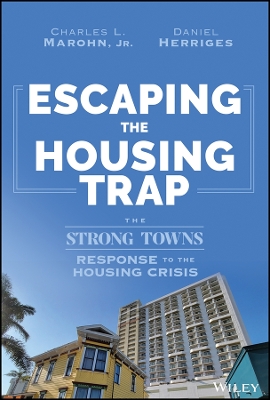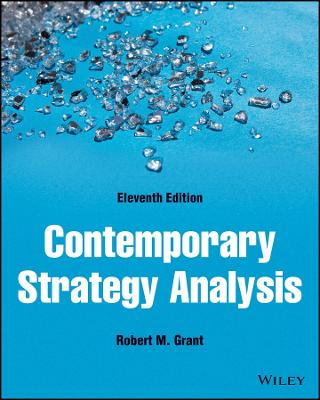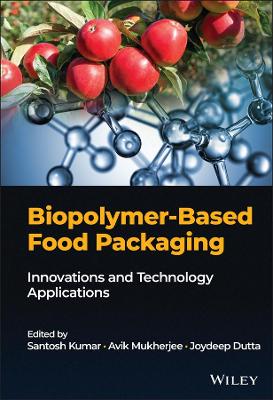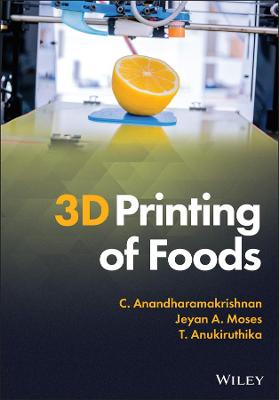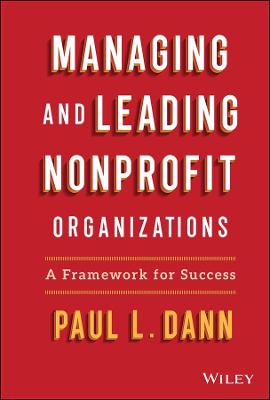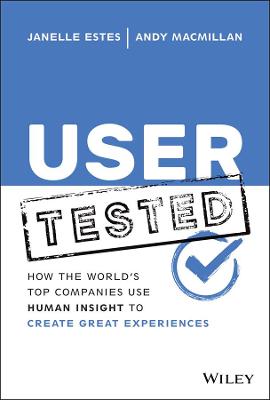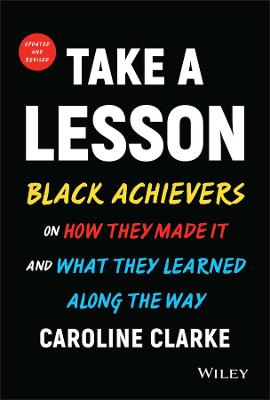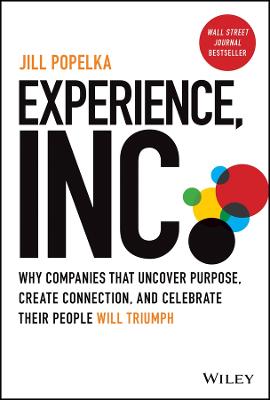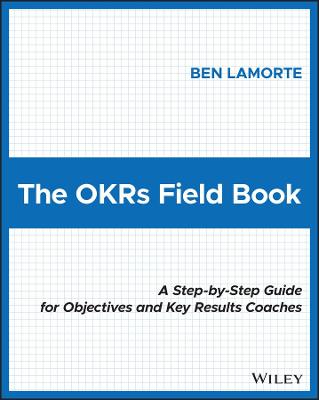From Invention to Patent
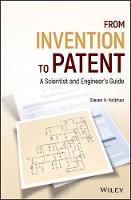 -15%
portes grátis
-15%
portes grátis
From Invention to Patent
A Scientist and Engineer's Guide
Voldman, Steven H.
John Wiley & Sons Inc
04/2018
344
Dura
Inglês
9781119125259
15 a 20 dias
732
Preface xix
Acknowledgments xxiii
1 Introduction 1
1.1 Introduction 1
1.1.1 Intellectual Property 1
1.2 Patent 2
1.2.1 What Is a Patent? 2
1.2.2 Patents and the US Constitution 2
1.2.3 Why Patent? 3
1.2.4 What Is Patentable? 3
1.3 Copyrights 4
1.4 Trademarks 4
1.5 Invention 4
1.5.1 What Is Invention? 4
1.5.1.1 Are You an Inventor? 4
1.5.1.2 Did You Know They Were Inventors? 5
1.5.1.3 Who Are Young Inventors? 5
1.6 Defining the Processes of Invention 6
1.6.1 Invention - Addition 6
1.6.2 Invention - Deletion 6
1.6.3 Invention - Rearrangement 6
1.6.4 Invention - when 1 + 1 = 3 6
1.7 Finding Invention in Your Work 7
1.8 Invention Time 7
1.8.1 When Is the Best Time to Invent? 8
1.9 From Invention to Productization 8
1.10 Value of Patenting 8
1.10.1 What will you Gain as an Inventor? 8
1.10.2 What has Invention Done for Me? 9
1.10.3 What will Your Company Gain from Invention? 9
1.10.4 What Will Your Company Gain from Patents? 9
1.11 Example Patents 10
1.12 Closing Comments and Summary 10
Problems 11
Case Studies 12
References 12
1.A Appendix 14
2 Invention 37
2.1 Introduction 37
2.2 How to Become an Inventor 37
2.2.1 What Do You Do That Is Creative? 37
2.2.2 How Do You Think? 38
2.2.3 Where Do You Think? 38
2.2.4 When Do You Think? 39
2.2.5 Capturing Your Ideas and Inventions 39
2.2.6 Timing 40
2.3 Studying Inventors 40
2.3.1 Studying Prolific Inventors 40
2.3.2 Studying Inventors' Habits 41
2.3.3 Studying Inventors' Goals and Objectives 41
2.4 The Creative Cycle 42
2.4.1 What is the Creative Cycle? 42
2.4.2 Stimulating the Creative Cycle 42
2.5 Left Brain and Right Brain 43
2.6 Thinking Out of the Box 43
2.7 Lateral Thinking Versus Critical Thinking 44
2.8 Finding Invention Between the Boundaries of Disciplines 44
2.9 Structured Invention - TRIZ 44
2.10 Example Patents 45
2.11 Closing Comments and Summary 45
Problems 46
Case Studies 46
References 47
2.A Appendix 49
3 Patents and Patent Languages 73
3.1 Introduction 73
3.2 Patent Search Engines 73
3.2.1 US Patent and Trademark Office (USPTO) 73
3.2.2 Pat2PDF 73
3.2.3 Google Patents 74
3.3 Patent Language 74
3.3.1 Specification 74
3.3.2 Claims 75
3.3.2.1 Independent Claims 75
3.3.2.2 Dependent Claims 75
3.3.3 Inventor 76
3.3.4 Joint Inventor 76
3.3.5 Provisional Applications 76
3.3.6 Nonprovisional Application 76
3.3.7 Divisional Applications 77
3.3.8 Continuing Patent Applications 77
3.4 Patent Language - Status and Operation 77
3.4.1 Office Actions 77
3.4.1.1 First Office Action 78
3.4.1.2 Final Office Action 78
3.4.2 Manual of Patent Examining Procedure 78
3.4.2.1 Prior Art 78
3.4.3 Allowance 78
3.4.4 Rejection 78
3.4.4.1 Final Rejection 78
3.4.5 Withdrawal 79
3.4.6 Notice of Allowance 79
3.4.7 Patent Pending 79
3.5 Patent Draft 79
3.5.1 Patent Draft - Structure 79
3.5.2 Patent Draft - Title 80
3.5.3 Patent Draft - Background Section 80
3.5.4 Patent Draft - Field of the Invention 80
3.5.5 Patent Draft - Summary 80
3.5.6 Patent Draft - Brief Description of the Figures 81
3.5.7 Patent Draft - Detailed Description of the Invention 81
3.5.8 Patent Draft - Claims 81
3.5.9 Patent Draft - Abstract 81
3.6 Closing Comments and Summary 82
Problems 82
Case Studies 83
References 83
4 Patents 85
4.1 Introduction 85
4.2 Patent Types 85
4.2.1 Utility Patents 85
4.2.2 Design Patents 85
4.2.3 Plant Patents 86
4.3 Patent Structure for Utility Patents 86
4.3.1 Utility Patent - Title 87
4.3.2 Utility Patent - Background Section 87
4.3.3 Utility Patent - Field of the Invention 87
4.3.4 Utility Patent - Summary Section 87
4.3.5 Utility Patent - Brief Description of Figures 88
4.3.6 Utility Patent - Detailed Description of the Invention 88
4.3.7 Utility Patent - Figures 88
4.3.7.1 Figures - Prior Art 88
4.3.7.2 Figures - Invention 88
4.3.8 Utility Patent - Claims 89
4.3.9 Utility Patent - Abstract 89
4.4 Design Patents 89
4.4.1 Design Patents - Patent Name Designation 89
4.4.2 Design Patents - Title 89
4.4.3 Design Patents - Inventors 90
4.4.4 Design Patents - Applicant and Assignee 90
4.4.5 Design Patents - References Cited 90
4.4.6 Design Patents - Foreign Patent Documents 90
4.4.7 Design Patents - Other References 91
4.4.8 Design Patents - Description 91
4.4.9 Design Patents - Figures 91
4.4.10 Design Patents - Claim 92
4.5 Plant Patents 92
4.5.1 Plant Patents - Patent Name Designation 93
4.5.2 Plant Patents - Title 93
4.5.3 Plant Patents - Cross?]reference to Related Applications 94
4.5.4 Plant Patents - Latin Name of the Genus 94
4.5.5 Plant Patents - Variety Denomination 94
4.5.6 Plant Patents - Background Section of the Invention 94
4.5.7 Plant Patents - Summary Section 94
4.5.8 Plant Patents - Brief Description of Drawings 95
4.5.9 Plant Patents - Detailed Botanical Description of the Plant 95
4.5.10 Plant Patents - Claims 97
4.5.11 Plant Patents - Abstract 98
4.6 Example Patents 99
4.7 Closing Comments and Summary 99
Problems 99
Case Studies 100
References 100
4.A Appendix 102
5 Patent Drawings 139
5.1 Introduction 139
5.1.1 Drawing Techniques - Drawing by Hand 140
5.1.2 Drawing Techniques - Drawing by Computer 140
5.1.3 Drawing Techniques - Drawing by Camera 140
5.2 Patent Drawings - Utility Patents 140
5.3 Patent Drawings - Structures 141
5.3.1 Rules for Structure Drawings 141
5.4 Patent Drawings - Apparatus 143
5.4.1 Rules for Apparatus Drawings 143
5.5 Patent Drawings - Circuit 144
5.5.1 Rules for Circuit Drawings 145
5.6 Patent Drawings - Systems 146
5.6.1 Rules for System Drawings 146
5.7 Patent Drawings - Method 147
5.7.1 Rules of Method Drawings 147
5.7.2 Correspondence Between Method Drawings and Claims 148
5.8 Patent Drawings - Design 148
5.8.1 Rules for Design Drawings 151
5.9 Patent Drawings - Plant Drawings 151
5.9.1 Rules for Plant Drawings 152
5.10 Unique Patent Drawings - Beauregard Claims 152
5.11 Patent Drawings and Office Actions 152
5.11.1 Draftperson's Patent Drawing Review 154
5.11.1.1 Drawings 37 CFR 1.84(a) Acceptable categories of drawings 155
5.11.1.2 Photographs 37 CFR 1.84(b) 156
5.11.1.3 Type of Paper 37 CFR 1.84(e): 156
5.11.1.4 Size of Paper. 37 CFR 1.84(f) 156
5.11.1.5 Margins 37 CFR 1.84(g) 156
5.11.1.6 Views 37 CFR 1.84(h) 156
5.11.1.7 Sectional Views 37 CFR 1.84(h)(3) 156
5.11.1.8 Arrangement of Views 37 CFR 1.84(j) 157
5.11.1.9 Scale 37 CFR 1.84(k) 157
5.11.1.10 Character of Lines, Numbers, and Letters 37 CFR 1.84(l) 157
5.11.1.11 Shading 37 CFR 1.84(m) 157
5.11.1.12 Numbers, Letters, and Reference Characters 37 CFR 1.48(p) 157
5.11.1.13 Lead Lines 37 CFR 1.84(q) 157
5.11.1.14 Numbering of Sheets of Drawing 37 CFR 1.84(t) 157
5.11.1.15 Numbering of Views 37 CFR 1.84(u) 157
5.11.1.16 Corrections 37 CFR 1.84(w) 157
5.11.1.17 Design Drawings 37 CFR 1.152 157
5.11.2 Objections or Rejections 158
5.12 Example Patents 158
5.13 Closing Comments and Summary 158
Problems 158
Case Studies 159
References 160
5.A Appendix 162
6 Claims 181
6.1 Introduction 181
6.2 Independent and Dependent Claims 181
6.2.1 Independent Claims 181
6.2.2 Dependent Claims 181
6.3 Structure Claims 183
6.4 Apparatus Claims 183
6.5 Method Claims 184
6.6 Hybrid Claims 185
6.7 Means Plus Function Claims 185
6.8 Beauregard Claims 185
6.9 Exhaustive Combination Claims 186
6.10 Alternative Claims 186
6.10.1 Markush Claims 186
6.10.2 Jepson Claims 187
6.10.3 Product-by-Process Claim 187
6.10.4 Programmed Computer Claims 187
6.10.5 Omnibus Claims 187
6.10.6 Signal Claims 187
6.10.7 Swiss-Type Claims 187
6.10.8 Reach-Through Claims 187
6.11 Closing Comments and Summary 188
Problems 188
Case Studies 189
References 190
7 Office Actions 193
7.1 Introduction 193
7.2 Office Actions - USPTO 193
7.2.1 Reading the Office Action 193
7.2.1.1 Application Number 193
7.2.1.2 Attorney Docket Number 194
7.2.1.3 First Named Inventor 194
7.2.1.4 Law Firm 195
7.2.1.5 Examiner 195
7.2.1.6 Art Unit 195
7.2.1.7 AIA (First Inventor to File) 195
7.2.1.8 Filing Date 195
7.2.1.9 Mail Date 195
7.2.1.10 Status 195
7.3 Disposition of Claims 196
7.3.1 Claims Pending 196
7.3.2 Allowed Claims 196
7.3.3 Rejected Claims 197
7.3.4 Objected Claims 197
7.3.5 Claims Subject to Restriction or Election 197
7.4 Application Papers 197
7.4.1 Objection of Specification 197
7.4.2 Drawing Status - Accepted or Objected To 197
7.5 Detailed Action 198
7.5.1 Claim Objections 198
7.5.2 Claim Rejections 198
7.5.2.1 35 USC 101 198
7.5.2.2 35 USC 112 198
7.5.2.3 35 USC 102 Novelty Rejection 199
7.5.2.4 35 USC 103 Obviousness Rejection 200
7.5.2.5 Drawing Objections 200
7.5.3 Allowable Subject Matter 201
7.5.4 Conclusion Section 201
7.6 Writing the Office Action Response 202
7.6.1 Introduction of the Office Action Response 202
7.6.2 Amending Claims 204
7.6.3 Amending Rejected Claims 204
7.6.3.1 35 USC 112 Rejection 205
7.6.3.2 35 USC 102 Rejection 206
7.6.3.3 35 USC 103 Rejection 206
7.6.4 Withdrawing a Claim 206
7.6.5 Addressing Objected Claims 206
7.6.6 Closing Statements of the Office Action Response 207
7.7 Preliminary Amendment 207
7.8 Final Office Action 207
7.9 European Office Action 208
7.9.1 Reading the European Office Action 208
7.9.2 EU Office Action Opening Comments 208
7.9.3 EU Patent Examiner Rulings 208
7.9.3.1 Article 78 EPC - Requirements of a European Patent Application 209
7.9.3.2 Article 83 EPC Disclosure of the Invention 209
7.9.3.3 Article 84 EPC - Claims 209
7.9.3.4 Article 52 (1) EPC - Patentable Inventions 209
7.9.3.5 Article 54 EPC - Novelty 210
7.9.3.6 Article 56 EPC - Inventive Step 210
7.9.3.7 Article 42 (1) EPC - Content of the Description 210
7.9.3.8 Article 43 (1) EPC - Form and Content of Claims 210
7.9.4 Writing the European Office Action Response 212
7.10 German Patent and Trademark Office (DPMA) Office Action 213
7.10.1 Underlying Documents 214
7.10.2 Subject of the Application 214
7.10.3 Person of Ordinary Skill in the Art 214
7.10.4 Interpretation 214
7.10.4.1 The Claim 214
7.10.4.2 Novelty 215
7.10.4.3 Inventive Step 215
7.10.5 Formal Defects 215
7.10.6 Conclusion Section 216
7.11 Supporting European Law Firms and EU Response 216
7.12 Closing Comments and Summary 216
Problems 216
Case Studies 217
References 218
8 Invention Generation Methodologies 219
8.1 Introduction 219
8.2 Creative Problem-Solving (CPS) Sessions 219
8.2.1 Building a CPS Session Moderator Team 219
8.2.2 Constructing CPS Session Attendee Team 219
8.2.3 CPS Session Rules 221
8.2.4 CPS Session Topic 221
8.2.5 CPS Session Invention Generation Process 221
8.2.6 CPS Session Invention Voting Procedure 222
8.2.7 Breakout Groups and Invention Development 222
8.2.8 CPS Session Closure 222
8.3 Systematic Thinking 222
8.3.1 TRIZ 222
8.3.2 TRIZ - Altshuller's Philosophy 223
8.3.3 TRIZ - Removal of Contradictions 223
8.4 Systematic Inventive Thinking (SIT) 224
8.5 Unified Systematic Inventive Thinking (USIT) 225
8.6 Data Mining 225
8.7 Anticipating the Next Invention 225
8.8 Closing Comments and Summary 226
Problems 226
Case Studies 227
References 227
9 Corporate Patent Strategy 229
9.1 Introduction 229
9.2 Review Committee System 229
9.3 Database Patent Tracking System - World Patent Tracking System (WPTS) 229
9.4 Documenting the Invention Ideas and Disclosures 232
9.5 Submission of the Invention Disclosure 232
9.6 Invention Review and Evaluation 234
9.6.1 Title 234
9.6.2 Disclosure Number 234
9.6.3 Inventors Name 235
9.6.4 Reviewer Name 235
9.6.5 Invention - Clarity 235
9.6.6 Invention - Scope 235
9.6.7 Prior Art Known to the Reviewer 235
9.6.8 Alternatives to the Invention 235
9.6.9 Advancement of the State of the Art 235
9.6.10 Detectability 235
9.6.11 Essential Features of the Invention 235
9.6.12 Avoidance - Alternative Circuits or Methods 235
9.7 Review Committee 236
9.8 Working with the Patent Attorney 236
9.9 Corporate Intellectual Property (IP) Strategy 236
9.9.1 Corporate IP Goals 237
9.9.1.1 Organizational Goals 237
9.9.1.2 Individual Goals 237
9.9.1.3 Integration of Individual Goals into Performance Plans 237
9.9.2 Corporate IP Targets 237
9.9.3 Short?]term Goals 238
9.9.4 Annual?]term IP Goals 238
9.9.5 Long?]term Goals 238
9.10 Incentives 238
9.10.1 Invention Disclosure Submission Award 239
9.10.2 Invention Patent Issue Award 239
9.10.3 Invention Achievement Plateau Award 239
9.10.4 Supplemental 20% Awards 240
9.10.5 Top 5% Invention Awards 240
9.10.6 Division Awards 240
9.10.7 Corporate Awards 240
9.10.8 Invitation to Annual Inventor Dinners 240
9.10.9 Invitation to Corporate Technical Recognition Award for Top Inventors 240
9.10.10 Master Inventor Award 240
9.11 Closing Comments and Summary 240
Problems 241
Case Studies 242
References 242
10 Expert Witness 243
10.1 Introduction 243
10.2 Expert Witness 243
10.2.1 Definition of Expert Witness 243
10.2.2 Role of Expert Witnesses 243
10.2.3 Duties of Expert Witnesses 244
10.3 Types of Expert Witnesses 244
10.3.1 Nontestifying Witnesses 245
10.3.2 Consulting Witnesses 245
10.3.3 Educating Witnesses 245
10.3.4 Reporting Witnesses 245
10.3.5 Testifying Witnesses 245
10.4 Working with Patent Attorney on Litigation 246
10.5 Expert Witness Report 246
10.6 Tactics 246
10.6.1 Invalidating the Patent 246
10.6.2 Invalidity Contention Document 247
10.7 Access to Materials in the Public Domain 248
10.7.1 Prior Art Searches 249
10.7.2 Released Press Literature 249
10.7.3 Customer Information 249
10.7.4 Product Documentations 249
10.8 Access to Materials Not in the Public Domain 250
10.8.1 Technical Disclosure Notebooks 250
10.8.2 Design Manuals 250
10.8.3 Design Physical Layout 250
10.8.4 Process Flow 251
10.9 Scientific Evidence 251
10.9.1 Frye Test 251
10.9.2 Daubert Test 251
10.10 Closing Comments and Summary 252
Problems 252
Case Studies 253
References 253
A Text for Invention Disclosure 255
B Text for Invention Disclosure Reviewer Form 257
C Text for Novelty Search Report 259
D USPTO Office Action Details of Contents 261
E USPTO Office Action Sections 263
F European Union (EU) Office Action 265
G European Union (EU) Office Action Response 267
H US to EU Attorney Letter - Office Action Response 271
I Petition for Submitting Color Photographs or Drawings 273
J Patent Cooperation Treaty 281
K Certificate of Correction 291
L Corrected Notice of Allowance 293
M Notice of Allowance 295
N Preliminary Amendment 301
O Submission of Corrected Drawings 305
Glossary of Terms 307
Index 309
Preface xix
Acknowledgments xxiii
1 Introduction 1
1.1 Introduction 1
1.1.1 Intellectual Property 1
1.2 Patent 2
1.2.1 What Is a Patent? 2
1.2.2 Patents and the US Constitution 2
1.2.3 Why Patent? 3
1.2.4 What Is Patentable? 3
1.3 Copyrights 4
1.4 Trademarks 4
1.5 Invention 4
1.5.1 What Is Invention? 4
1.5.1.1 Are You an Inventor? 4
1.5.1.2 Did You Know They Were Inventors? 5
1.5.1.3 Who Are Young Inventors? 5
1.6 Defining the Processes of Invention 6
1.6.1 Invention - Addition 6
1.6.2 Invention - Deletion 6
1.6.3 Invention - Rearrangement 6
1.6.4 Invention - when 1 + 1 = 3 6
1.7 Finding Invention in Your Work 7
1.8 Invention Time 7
1.8.1 When Is the Best Time to Invent? 8
1.9 From Invention to Productization 8
1.10 Value of Patenting 8
1.10.1 What will you Gain as an Inventor? 8
1.10.2 What has Invention Done for Me? 9
1.10.3 What will Your Company Gain from Invention? 9
1.10.4 What Will Your Company Gain from Patents? 9
1.11 Example Patents 10
1.12 Closing Comments and Summary 10
Problems 11
Case Studies 12
References 12
1.A Appendix 14
2 Invention 37
2.1 Introduction 37
2.2 How to Become an Inventor 37
2.2.1 What Do You Do That Is Creative? 37
2.2.2 How Do You Think? 38
2.2.3 Where Do You Think? 38
2.2.4 When Do You Think? 39
2.2.5 Capturing Your Ideas and Inventions 39
2.2.6 Timing 40
2.3 Studying Inventors 40
2.3.1 Studying Prolific Inventors 40
2.3.2 Studying Inventors' Habits 41
2.3.3 Studying Inventors' Goals and Objectives 41
2.4 The Creative Cycle 42
2.4.1 What is the Creative Cycle? 42
2.4.2 Stimulating the Creative Cycle 42
2.5 Left Brain and Right Brain 43
2.6 Thinking Out of the Box 43
2.7 Lateral Thinking Versus Critical Thinking 44
2.8 Finding Invention Between the Boundaries of Disciplines 44
2.9 Structured Invention - TRIZ 44
2.10 Example Patents 45
2.11 Closing Comments and Summary 45
Problems 46
Case Studies 46
References 47
2.A Appendix 49
3 Patents and Patent Languages 73
3.1 Introduction 73
3.2 Patent Search Engines 73
3.2.1 US Patent and Trademark Office (USPTO) 73
3.2.2 Pat2PDF 73
3.2.3 Google Patents 74
3.3 Patent Language 74
3.3.1 Specification 74
3.3.2 Claims 75
3.3.2.1 Independent Claims 75
3.3.2.2 Dependent Claims 75
3.3.3 Inventor 76
3.3.4 Joint Inventor 76
3.3.5 Provisional Applications 76
3.3.6 Nonprovisional Application 76
3.3.7 Divisional Applications 77
3.3.8 Continuing Patent Applications 77
3.4 Patent Language - Status and Operation 77
3.4.1 Office Actions 77
3.4.1.1 First Office Action 78
3.4.1.2 Final Office Action 78
3.4.2 Manual of Patent Examining Procedure 78
3.4.2.1 Prior Art 78
3.4.3 Allowance 78
3.4.4 Rejection 78
3.4.4.1 Final Rejection 78
3.4.5 Withdrawal 79
3.4.6 Notice of Allowance 79
3.4.7 Patent Pending 79
3.5 Patent Draft 79
3.5.1 Patent Draft - Structure 79
3.5.2 Patent Draft - Title 80
3.5.3 Patent Draft - Background Section 80
3.5.4 Patent Draft - Field of the Invention 80
3.5.5 Patent Draft - Summary 80
3.5.6 Patent Draft - Brief Description of the Figures 81
3.5.7 Patent Draft - Detailed Description of the Invention 81
3.5.8 Patent Draft - Claims 81
3.5.9 Patent Draft - Abstract 81
3.6 Closing Comments and Summary 82
Problems 82
Case Studies 83
References 83
4 Patents 85
4.1 Introduction 85
4.2 Patent Types 85
4.2.1 Utility Patents 85
4.2.2 Design Patents 85
4.2.3 Plant Patents 86
4.3 Patent Structure for Utility Patents 86
4.3.1 Utility Patent - Title 87
4.3.2 Utility Patent - Background Section 87
4.3.3 Utility Patent - Field of the Invention 87
4.3.4 Utility Patent - Summary Section 87
4.3.5 Utility Patent - Brief Description of Figures 88
4.3.6 Utility Patent - Detailed Description of the Invention 88
4.3.7 Utility Patent - Figures 88
4.3.7.1 Figures - Prior Art 88
4.3.7.2 Figures - Invention 88
4.3.8 Utility Patent - Claims 89
4.3.9 Utility Patent - Abstract 89
4.4 Design Patents 89
4.4.1 Design Patents - Patent Name Designation 89
4.4.2 Design Patents - Title 89
4.4.3 Design Patents - Inventors 90
4.4.4 Design Patents - Applicant and Assignee 90
4.4.5 Design Patents - References Cited 90
4.4.6 Design Patents - Foreign Patent Documents 90
4.4.7 Design Patents - Other References 91
4.4.8 Design Patents - Description 91
4.4.9 Design Patents - Figures 91
4.4.10 Design Patents - Claim 92
4.5 Plant Patents 92
4.5.1 Plant Patents - Patent Name Designation 93
4.5.2 Plant Patents - Title 93
4.5.3 Plant Patents - Cross?]reference to Related Applications 94
4.5.4 Plant Patents - Latin Name of the Genus 94
4.5.5 Plant Patents - Variety Denomination 94
4.5.6 Plant Patents - Background Section of the Invention 94
4.5.7 Plant Patents - Summary Section 94
4.5.8 Plant Patents - Brief Description of Drawings 95
4.5.9 Plant Patents - Detailed Botanical Description of the Plant 95
4.5.10 Plant Patents - Claims 97
4.5.11 Plant Patents - Abstract 98
4.6 Example Patents 99
4.7 Closing Comments and Summary 99
Problems 99
Case Studies 100
References 100
4.A Appendix 102
5 Patent Drawings 139
5.1 Introduction 139
5.1.1 Drawing Techniques - Drawing by Hand 140
5.1.2 Drawing Techniques - Drawing by Computer 140
5.1.3 Drawing Techniques - Drawing by Camera 140
5.2 Patent Drawings - Utility Patents 140
5.3 Patent Drawings - Structures 141
5.3.1 Rules for Structure Drawings 141
5.4 Patent Drawings - Apparatus 143
5.4.1 Rules for Apparatus Drawings 143
5.5 Patent Drawings - Circuit 144
5.5.1 Rules for Circuit Drawings 145
5.6 Patent Drawings - Systems 146
5.6.1 Rules for System Drawings 146
5.7 Patent Drawings - Method 147
5.7.1 Rules of Method Drawings 147
5.7.2 Correspondence Between Method Drawings and Claims 148
5.8 Patent Drawings - Design 148
5.8.1 Rules for Design Drawings 151
5.9 Patent Drawings - Plant Drawings 151
5.9.1 Rules for Plant Drawings 152
5.10 Unique Patent Drawings - Beauregard Claims 152
5.11 Patent Drawings and Office Actions 152
5.11.1 Draftperson's Patent Drawing Review 154
5.11.1.1 Drawings 37 CFR 1.84(a) Acceptable categories of drawings 155
5.11.1.2 Photographs 37 CFR 1.84(b) 156
5.11.1.3 Type of Paper 37 CFR 1.84(e): 156
5.11.1.4 Size of Paper. 37 CFR 1.84(f) 156
5.11.1.5 Margins 37 CFR 1.84(g) 156
5.11.1.6 Views 37 CFR 1.84(h) 156
5.11.1.7 Sectional Views 37 CFR 1.84(h)(3) 156
5.11.1.8 Arrangement of Views 37 CFR 1.84(j) 157
5.11.1.9 Scale 37 CFR 1.84(k) 157
5.11.1.10 Character of Lines, Numbers, and Letters 37 CFR 1.84(l) 157
5.11.1.11 Shading 37 CFR 1.84(m) 157
5.11.1.12 Numbers, Letters, and Reference Characters 37 CFR 1.48(p) 157
5.11.1.13 Lead Lines 37 CFR 1.84(q) 157
5.11.1.14 Numbering of Sheets of Drawing 37 CFR 1.84(t) 157
5.11.1.15 Numbering of Views 37 CFR 1.84(u) 157
5.11.1.16 Corrections 37 CFR 1.84(w) 157
5.11.1.17 Design Drawings 37 CFR 1.152 157
5.11.2 Objections or Rejections 158
5.12 Example Patents 158
5.13 Closing Comments and Summary 158
Problems 158
Case Studies 159
References 160
5.A Appendix 162
6 Claims 181
6.1 Introduction 181
6.2 Independent and Dependent Claims 181
6.2.1 Independent Claims 181
6.2.2 Dependent Claims 181
6.3 Structure Claims 183
6.4 Apparatus Claims 183
6.5 Method Claims 184
6.6 Hybrid Claims 185
6.7 Means Plus Function Claims 185
6.8 Beauregard Claims 185
6.9 Exhaustive Combination Claims 186
6.10 Alternative Claims 186
6.10.1 Markush Claims 186
6.10.2 Jepson Claims 187
6.10.3 Product-by-Process Claim 187
6.10.4 Programmed Computer Claims 187
6.10.5 Omnibus Claims 187
6.10.6 Signal Claims 187
6.10.7 Swiss-Type Claims 187
6.10.8 Reach-Through Claims 187
6.11 Closing Comments and Summary 188
Problems 188
Case Studies 189
References 190
7 Office Actions 193
7.1 Introduction 193
7.2 Office Actions - USPTO 193
7.2.1 Reading the Office Action 193
7.2.1.1 Application Number 193
7.2.1.2 Attorney Docket Number 194
7.2.1.3 First Named Inventor 194
7.2.1.4 Law Firm 195
7.2.1.5 Examiner 195
7.2.1.6 Art Unit 195
7.2.1.7 AIA (First Inventor to File) 195
7.2.1.8 Filing Date 195
7.2.1.9 Mail Date 195
7.2.1.10 Status 195
7.3 Disposition of Claims 196
7.3.1 Claims Pending 196
7.3.2 Allowed Claims 196
7.3.3 Rejected Claims 197
7.3.4 Objected Claims 197
7.3.5 Claims Subject to Restriction or Election 197
7.4 Application Papers 197
7.4.1 Objection of Specification 197
7.4.2 Drawing Status - Accepted or Objected To 197
7.5 Detailed Action 198
7.5.1 Claim Objections 198
7.5.2 Claim Rejections 198
7.5.2.1 35 USC 101 198
7.5.2.2 35 USC 112 198
7.5.2.3 35 USC 102 Novelty Rejection 199
7.5.2.4 35 USC 103 Obviousness Rejection 200
7.5.2.5 Drawing Objections 200
7.5.3 Allowable Subject Matter 201
7.5.4 Conclusion Section 201
7.6 Writing the Office Action Response 202
7.6.1 Introduction of the Office Action Response 202
7.6.2 Amending Claims 204
7.6.3 Amending Rejected Claims 204
7.6.3.1 35 USC 112 Rejection 205
7.6.3.2 35 USC 102 Rejection 206
7.6.3.3 35 USC 103 Rejection 206
7.6.4 Withdrawing a Claim 206
7.6.5 Addressing Objected Claims 206
7.6.6 Closing Statements of the Office Action Response 207
7.7 Preliminary Amendment 207
7.8 Final Office Action 207
7.9 European Office Action 208
7.9.1 Reading the European Office Action 208
7.9.2 EU Office Action Opening Comments 208
7.9.3 EU Patent Examiner Rulings 208
7.9.3.1 Article 78 EPC - Requirements of a European Patent Application 209
7.9.3.2 Article 83 EPC Disclosure of the Invention 209
7.9.3.3 Article 84 EPC - Claims 209
7.9.3.4 Article 52 (1) EPC - Patentable Inventions 209
7.9.3.5 Article 54 EPC - Novelty 210
7.9.3.6 Article 56 EPC - Inventive Step 210
7.9.3.7 Article 42 (1) EPC - Content of the Description 210
7.9.3.8 Article 43 (1) EPC - Form and Content of Claims 210
7.9.4 Writing the European Office Action Response 212
7.10 German Patent and Trademark Office (DPMA) Office Action 213
7.10.1 Underlying Documents 214
7.10.2 Subject of the Application 214
7.10.3 Person of Ordinary Skill in the Art 214
7.10.4 Interpretation 214
7.10.4.1 The Claim 214
7.10.4.2 Novelty 215
7.10.4.3 Inventive Step 215
7.10.5 Formal Defects 215
7.10.6 Conclusion Section 216
7.11 Supporting European Law Firms and EU Response 216
7.12 Closing Comments and Summary 216
Problems 216
Case Studies 217
References 218
8 Invention Generation Methodologies 219
8.1 Introduction 219
8.2 Creative Problem-Solving (CPS) Sessions 219
8.2.1 Building a CPS Session Moderator Team 219
8.2.2 Constructing CPS Session Attendee Team 219
8.2.3 CPS Session Rules 221
8.2.4 CPS Session Topic 221
8.2.5 CPS Session Invention Generation Process 221
8.2.6 CPS Session Invention Voting Procedure 222
8.2.7 Breakout Groups and Invention Development 222
8.2.8 CPS Session Closure 222
8.3 Systematic Thinking 222
8.3.1 TRIZ 222
8.3.2 TRIZ - Altshuller's Philosophy 223
8.3.3 TRIZ - Removal of Contradictions 223
8.4 Systematic Inventive Thinking (SIT) 224
8.5 Unified Systematic Inventive Thinking (USIT) 225
8.6 Data Mining 225
8.7 Anticipating the Next Invention 225
8.8 Closing Comments and Summary 226
Problems 226
Case Studies 227
References 227
9 Corporate Patent Strategy 229
9.1 Introduction 229
9.2 Review Committee System 229
9.3 Database Patent Tracking System - World Patent Tracking System (WPTS) 229
9.4 Documenting the Invention Ideas and Disclosures 232
9.5 Submission of the Invention Disclosure 232
9.6 Invention Review and Evaluation 234
9.6.1 Title 234
9.6.2 Disclosure Number 234
9.6.3 Inventors Name 235
9.6.4 Reviewer Name 235
9.6.5 Invention - Clarity 235
9.6.6 Invention - Scope 235
9.6.7 Prior Art Known to the Reviewer 235
9.6.8 Alternatives to the Invention 235
9.6.9 Advancement of the State of the Art 235
9.6.10 Detectability 235
9.6.11 Essential Features of the Invention 235
9.6.12 Avoidance - Alternative Circuits or Methods 235
9.7 Review Committee 236
9.8 Working with the Patent Attorney 236
9.9 Corporate Intellectual Property (IP) Strategy 236
9.9.1 Corporate IP Goals 237
9.9.1.1 Organizational Goals 237
9.9.1.2 Individual Goals 237
9.9.1.3 Integration of Individual Goals into Performance Plans 237
9.9.2 Corporate IP Targets 237
9.9.3 Short?]term Goals 238
9.9.4 Annual?]term IP Goals 238
9.9.5 Long?]term Goals 238
9.10 Incentives 238
9.10.1 Invention Disclosure Submission Award 239
9.10.2 Invention Patent Issue Award 239
9.10.3 Invention Achievement Plateau Award 239
9.10.4 Supplemental 20% Awards 240
9.10.5 Top 5% Invention Awards 240
9.10.6 Division Awards 240
9.10.7 Corporate Awards 240
9.10.8 Invitation to Annual Inventor Dinners 240
9.10.9 Invitation to Corporate Technical Recognition Award for Top Inventors 240
9.10.10 Master Inventor Award 240
9.11 Closing Comments and Summary 240
Problems 241
Case Studies 242
References 242
10 Expert Witness 243
10.1 Introduction 243
10.2 Expert Witness 243
10.2.1 Definition of Expert Witness 243
10.2.2 Role of Expert Witnesses 243
10.2.3 Duties of Expert Witnesses 244
10.3 Types of Expert Witnesses 244
10.3.1 Nontestifying Witnesses 245
10.3.2 Consulting Witnesses 245
10.3.3 Educating Witnesses 245
10.3.4 Reporting Witnesses 245
10.3.5 Testifying Witnesses 245
10.4 Working with Patent Attorney on Litigation 246
10.5 Expert Witness Report 246
10.6 Tactics 246
10.6.1 Invalidating the Patent 246
10.6.2 Invalidity Contention Document 247
10.7 Access to Materials in the Public Domain 248
10.7.1 Prior Art Searches 249
10.7.2 Released Press Literature 249
10.7.3 Customer Information 249
10.7.4 Product Documentations 249
10.8 Access to Materials Not in the Public Domain 250
10.8.1 Technical Disclosure Notebooks 250
10.8.2 Design Manuals 250
10.8.3 Design Physical Layout 250
10.8.4 Process Flow 251
10.9 Scientific Evidence 251
10.9.1 Frye Test 251
10.9.2 Daubert Test 251
10.10 Closing Comments and Summary 252
Problems 252
Case Studies 253
References 253
A Text for Invention Disclosure 255
B Text for Invention Disclosure Reviewer Form 257
C Text for Novelty Search Report 259
D USPTO Office Action Details of Contents 261
E USPTO Office Action Sections 263
F European Union (EU) Office Action 265
G European Union (EU) Office Action Response 267
H US to EU Attorney Letter - Office Action Response 271
I Petition for Submitting Color Photographs or Drawings 273
J Patent Cooperation Treaty 281
K Certificate of Correction 291
L Corrected Notice of Allowance 293
M Notice of Allowance 295
N Preliminary Amendment 301
O Submission of Corrected Drawings 305
Glossary of Terms 307
Index 309



